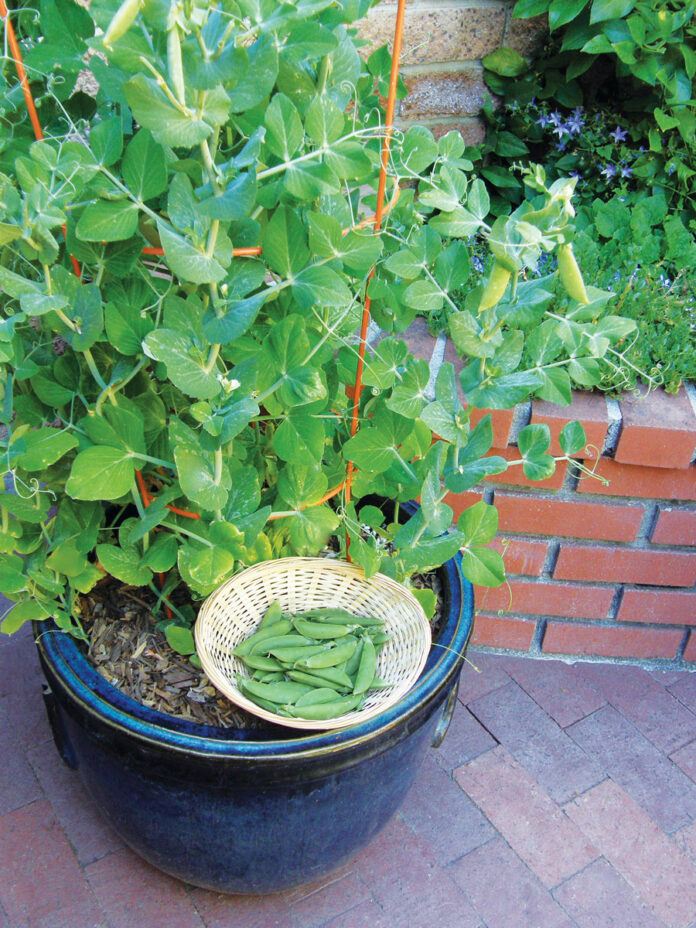I have been gardening for a very long time. But even now I feel I know just a little bit about a whole lot of subjects. Every day I learn something new. Now that spring weather has finally arrived I’m anxious to start planting like the rest of you. Because I have a lot of shade that rotates during the day and a small space to garden, I am limited by what I can grow successfully.
On a lark I signed up for a free ChatGPT Open AI account to see what all the fuss was about and whether I could learn anything from my query. Let’s just say the results were a little dry. So here are my own thoughts about growing vegetables in containers, small spaces or shade.
The best veggie varieties for growing in containers are: beans, chard, chili peppers, kale, lettuce, onions, radishes, spinach, sweet peppers and tomatoes. Last year I grew some French Marcotte container bush beans which were delicious although I ended up nibbling on them raw while putzing around on the deck. They were delicious. Strawberries are great for containers, too.
Last week I started some Little Crunch Container Snap Peas. The package says I’m to get loads of crispy, sweet pods on vigorous short vines that are perfect for snacks. Peppers, both chili and sweet varieties do well in containers, too. You might want to try growing bite-sized sweet peppers for your pizza or for snacking while out in the garden.
Tomatoes are always popular to grow whether in the ground in a small garden or in pots on the patio. Bush types (determinate) don’t grow as large as indeterminate vines. If you like large size tomatoes, plant Bush Beefsteak and you’ll be harvesting clusters of delicious 8 ounce tomatoes in just 62 days. A half wine barrel can house a taller tomato like the ever popular Sungold. Small gold-orange cherry tomatoes ripen early and are oh-so-sweet. You’ll plant these every year after you’ve tasted one.
Zucchini lovers might try the non-rambling Raven or Astia varieties, which won’t take up as much space as a traditional type. If you have a little space to spare, grow the round French heirloom squash, Ronde de Nice. Jade colored zucchini produce over a long period. Harvest the fruit when they reach golf ball up to baseball size. They are sublime grilled or try them stuffed. A tip to encourage pollination when squash or melons bloom is to pinch off leaves covering the blossoms in order to give pollinators a clear path to the flowers.
Herbs make good additions to the smaller garden, too. They can be kept compact with frequent pinching as you harvest sprigs for cooking. They also attract beneficial insects to the garden. Oregano, chamomile and fennel are good insectary herbs.
Shade tolerant vegetables for your brightest spots—the partial shade areas—include beans, peas, potatoes, pumpkin, summer squash and early maturing tomatoes like Early Girl, Stupice, San Francisco Fog, Isis Candy as well as other cherry tomatoes. Corn and peppers will be lankier and bear later and only modestly in partial shade.
Root crops and leafy plants can tolerate more shade than fruiting crops. Beets, carrots, potatoes, celery and turnips will grow quite happily in partial shade. So will shallots and bunching onions, cilantro, garlic, chives, kale, leeks, parsley, oregano, cilantro and thyme. Leafy plants can tolerate partial to light shade because their leaves grow larger to absorb the sunlight the plants need. In very light shade areas concentrate on leafy green like Swiss chard, lettuce, spinach, arugula, radishes and tarragon.
Shade can be decidedly helpful to some crops. Leafy greens will be more tender and succulent, without the bitterness they tend to acquire when conditions are too hot. A combination of a bit of afternoon shade and an abundance of moisture will help cut-and-come-again crops like broccoli, lettuce, cabbage and celery stay in good condition longer in hot weather.
Whatever plants you grow in your shady garden, be sure not to crowd them. Plants tend to sprawl there and if placed too close together they will compete for available light. Place your vegetables plants wherever they will get the most light even if it means putting different crops in separate places. A small harvest is still better than no harvest at all. Your vegetables may take a bit longer to mature without full sun so be patient.
Jan Nelson, a landscape designer and California-certified nursery professional, will answer questions about gardening in the Santa Cruz Mountains. Email her at ja******@*ol.com, or visit jannelsonlandscapedesign.com.











